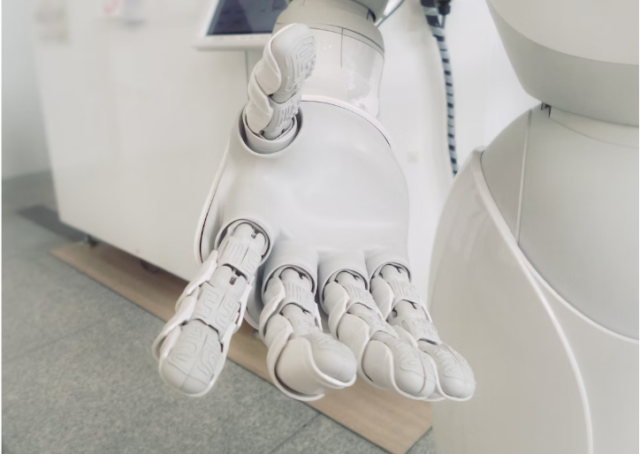AI boosts cybersecurity by detecting threats, identifying insiders, and providing real-time monitoring, but ethical use and human involvement are crucial.
One of the factors contributing to the alarming rise in cybercrime is the reduced barrier to entry for malicious individuals. These cybercriminals have adapted their strategies, even going so far as to offer subscription services and starter kits. Their utilization of large language models (LLMs), such as ChatGPT, to generate malevolent code further underscores the challenges faced in cybersecurity.
In opposition to hackers, AI-driven cybersecurity utilities began to appear. Given these emerging threats, it is imperative for all business leaders in today's digital landscape to stay informed about the advancements of artificial intelligence in the field of cybersecurity. Here's what you need to know.

What is the state of affairs?
The statistics indicate that companies are betting on AI and machine learning. In the Forbes report, as many as 76% of enterprises allocate funds for these areas from their IT budget as a priority. This shift in focus can be attributed to the sheer volume of data that needs to be analyzed to effectively detect and counter cyber threats, alongside other contributing factors. The exponential growth of connected devices is expected to generate a mind-boggling 79 zettabytes of data by 2025, a number that is simply beyond the capacity of human analysts to handle manually.
AI is increasingly recognized as a crucial tool in combating cybercrime. This is reinforced by recent research conducted by Blackberry, indicating that "82% of IT decision-makers are planning to invest in AI-driven cybersecurity over the next two years, with 48% intending to make investments by the end of 2024."
What AI cybersecurity risks are of concern?
As with any powerful technology, it is important to be aware of the potential risks that come with the improper use of AI. Blackberry has highlighted a number of concerns related to the misuse of ChatGPT, such as social engineering techniques that involve the creation of highly convincing and difficult-to-detect phishing emails. Additionally, there is a concern regarding the possibility of training less experienced hackers to become more effective in carrying out their attacks. These risks emphasize the need for responsible and ethical usage of AI technologies.
It is concerning that malicious actors can exploit AI to propagate malware and other cyber threats. However, with ChatGPT, the generated code is not flawless. It may bring you close to 80% completion but may fall short of accomplishing the desired outcome. Coding is an all-or-nothing pursuit; incomplete code will not function. Therefore, the last mile of human intelligence and refinement is necessary to ensure effective functionality. Considering this, the magnitude of the threat may not be as significant as sensationalist headlines suggest.
What can AI offer to improve digital defense?
The main advantage of AI lies in the ability to process large amounts of data. This brings great opportunities for automation in security. Only not everyone can take advantage of AI abilities due to some limitations. For example, the same ChatGPT is not available in some regions and imposes restrictions on use. You have to use ChatGPT VPN to bypass them. The good news is that premium VPNs can bypass regional blocking and restore access to the chatbot. You can try VeePN, it works great for us.
1. Advanced threat detection
AI has an extraordinary ability to draw inferences, identify patterns, and proactively take measures to enhance user security against online threats.AI can automatically respond to incidents, analyze gigabytes of data and detect unnatural behavior, which ultimately improves the cybersecurity of companies. Recent advances in computational power and scalability provide an exciting glimpse into AI's future, promising to assist in maintaining a safer online environment.
2. Identification of insider threats
AI has got your back when it comes to tackling insider threats, which can be quite a headache for organizations. By diving deep into user behavior, AI-powered solutions are able to pinpoint employees who might be up to no good. Sounds like something straight out of a spy movie, right? Well, this smart technology can actually help stop data breaches and other sneaky security incidents from happening. Pretty cool, huh?
3. Constant monitoring
AI can continuously monitor your systems, which is super important for modern cybersecurity. These awesome AI-powered tools are designed to spot and stop attacks in real-time and even automate the response process. They also help security experts like you stay ahead of new threats and trends, so you can take action before things get messy.
Holistic Approach to Cybersecurity
1. AI-based protection
Supporting the adoption of defense in depth and providing visibility and rapid analysis of data are crucial components of well-designed structures and architectures. Processing gigabytes of data instantly, an AI-based system can make informed and informed decisions. This reduces the number of vulnerabilities to a minimum, helps control attack surfaces and detect weaknesses.
2. Train employees
An employee of any level can pose a threat to cybersecurity: from a cleaner to senior development. Obviously, it is easier to deceive a person who is not trained in the prevention of dangerous injections. Training is necessary, it is only a matter of time before a hacker breaks in or gets in. Organizations can foster a strong security culture and minimize the chances of being caught off guard. Through the implementation of AI technology, organizations can identify vulnerabilities and enable security specialists to focus their efforts on improving the organization's security posture. AI can introduce gentle reminders or "nudges" to influence individuals' interactions with technology and encourage responsible behavior.

3. Implement processes to meet requirements
Security encompasses the entire organization, extending beyond technology. Designing processes that are easier to comply with than to avoid is crucial for consistent implementation. The installation of a blame-free culture enables swift identification of weaknesses and issues. AI-driven security assessments, monitoring, and meaningful metrics aid in identifying areas for enhancement. Wherever feasible, incorporating external dependencies allows AI to identify potential vulnerabilities.
Conclusion
Business leaders must diligently acknowledge the potential dangers and benefits associated with utilizing AI in cybersecurity. Furthermore, they should carefully consider the ethical implications surrounding the implementation of AI-based solutions. While remaining vigilant against the weaponized use of AI, it is imperative to recognize the vast potential of AI to enhance cybersecurity and ultimately contribute to the betterment of society.
Also read: Exploring Character AI: GPT-Like Chatbot To Chat With Anyone



